This article really illustrates the trend
 by ADELE PETERS – 30 Jan. 2020
by ADELE PETERS – 30 Jan. 2020
Here are 11 more cities that have joined the car-free revolution
From Amsterdam to Tempe, Arizona, more and more cities are finding that eliminating cars from their streets makes people happier and healthier.
The automobile is such an important part of American culture, life, and commerce that it can be hard to really grasp all the negative externalities of our driving habits: Commuters in Los Angeles now spend 119 hours each year stuck in unmoving traffic; in Moscow, they spend an average of 210 hours, or nine entire days. There are as many as 2 billion parking spaces in the U.S. (eight times more than there are cars), often on valuable urban land that could otherwise be used—along with excess road space—for housing or parks. Pollution from tailpipes is linked to hundreds of thousands of deaths globally each year. SUVs, alone, now emit more than 700 megatons of greenhouse gases annually, more than the total emissions of the U.K. and the Netherlands. More than 1.25 million people are killed in road crashes each year.
In response, some cities and neighborhoods are beginning to rethink where cars can go—and redesigning streets to prioritize other uses, from public transportation to parks. It’s happening around the world, including on major streets in cities like San Francisco and New York, but happening at the largest scale in several European cities. Here are a few of the most interesting examples.
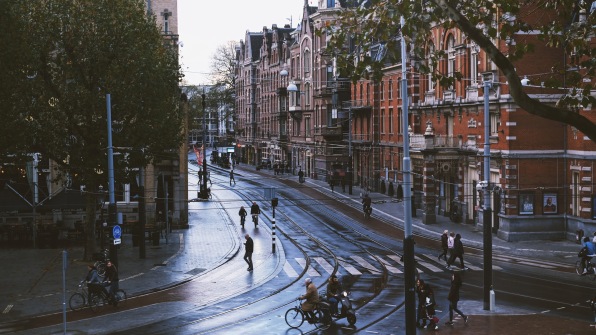
AMSTERDAM
The Dutch capital doesn’t plan to fully ban cars. But a 27-point “car-free” agenda will drastically reduce traffic in a city that’s already known for biking and walking. (Even now, less than a quarter of trips take place in a car.) One key step: removing 11,200 parking spots by 2025, and using that space for wider sidewalks and bike lanes, trees, and bike parking. Some streets will be narrowed and blocked off, and the city will issue fewer parking permits. It also plans to redesign roads for better biking, add bike parking at metro stations, and may experiment with free public transit at rush hour. The few cars that are left will soon be electric or otherwise emissions-free—by 2030, Amsterdam will ban all gas and diesel vehicles.
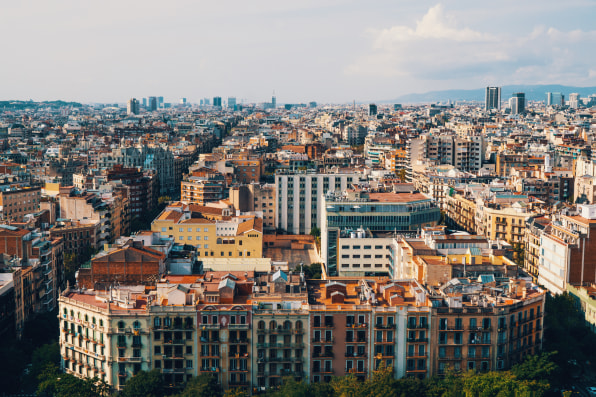
BARCELONA
In the Barcelona neighborhood of Poblenau, some former intersections are now playgrounds, and parking spaces and some car lanes have been replaced with benches and potted plants. The neighborhood, transformed in 2016, was the city’s first true “superblock”—a nine-block, tic-tac-toe-shaped section of the city that turns over space for cars to pedestrians, cyclists, and neighbors who want to sit or play outside. Four other superblocks now exist in other Barcelona neighborhoods, some of which are still expanding, and others are in planning. This January, after the city officially declared a climate emergency, it said that it would transform another 15 kilometers of streets to new superblocks. The entire city is also now a low-emissions zone, meaning that older gas and diesel cars now pay a fine if they enter it. It’s designed both to fight climate change and improve the city’s air pollution, which prematurely kills hundreds of residents each year.
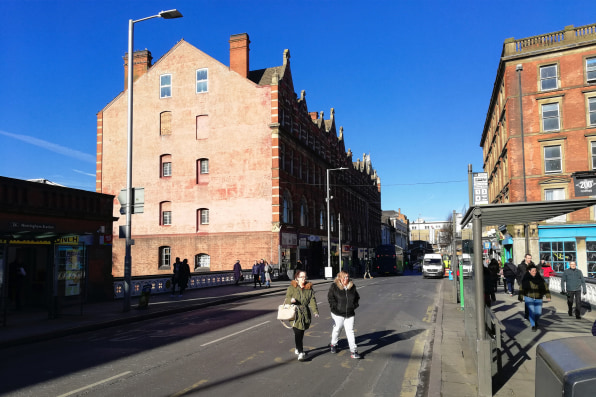
BIRMINGHAM, U.K.
Birmingham once called itself the U.K.’s “motorway city.” Now, after joining dozens of other global cities in declaring a climate emergency in 2019, the city is working on plans to limit access to cars in its city center, creating a new network of pedestrian streets, and turning space over to bikes and public transit. One part of the strategy involves giving businesses incentives to get rid of their parking lots; the city plans to build thousands of homes on them instead. Other neighborhoods will also restrict traffic, particularly around schools. By 2030, Birmingham plans to be carbon neutral, and reducing car use will be one part of hitting that goal.
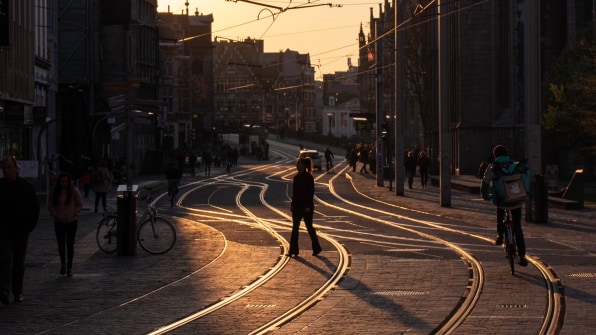
BRUSSELS
For the last five years, Brussels has been systematically getting rid of cars in a central zone called “Le Pietonnier,” or “the pedestrian.” Wide boulevards that were filled with heavy traffic are being replaced with tree-planted green spaces, benches, and bike paths lined with café tables. By 2018, black carbon—the soot from car exhaust, which is particularly unhealthy to breathe—had dropped 20% in the area. Unfortunately, pollution correspondingly rose around a ring road as traffic relocated; now, the city plans to also cut off traffic to the ring road. By the end of the year, the final pieces of the central car-free area will be pedestrianized.
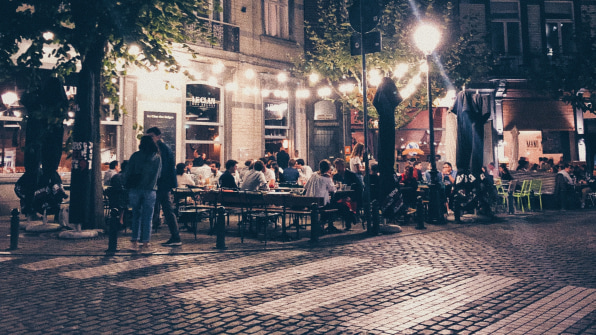
GHENT, BELGIUM
Until recently, some streets in the historic center of the Belgian city of Ghent were choked with so much traffic and air pollution that cafés stopped using outdoor tables—no one wanted to sit outside. In 2017, the city transformed essentially overnight, blocking off traffic in a large area that expanded an older pedestrian zone, and pushing cars in surrounding areas to a ring road. Within a year, the number of cyclists in the city center had grown by 25%. Companies like DHL now use electric cargo bikes to deliver packages. Air pollution sharply dropped. “Personally, I feel like the streets are more alive as they aren’t just for cars anymore,” one resident recently told the Guardian. “More people put their chairs out in the summer to sit on the pavement and talk, and some streets become ‘living streets’ where the kids can play outside, skate, and adults hold barbecues.”

HELSINKI
In a new development in Helsinki’s Kalasatama neighborhood, none of the new apartments come with parking. It’s one of several ways that the Finnish city is nudging people to drive less; by 2025, Helsinki wants to make alternatives to driving appealing enough that people no longer feel it’s necessary to own a car. “It is important that more and more trips are made by using walking, cycling, and by public transport,” says Anna Pätynen, the city’s traffic and transit engineer. “Helsinki and the Helsinki region are growing rapidly. New inhabitants and jobs generate more traffic. At the same time, the city must be functional, eco-efficient, and pleasant. As the urban structure becomes more dense, the need for mobility increases, whereas the space available for traffic does not.”
The city was a pioneer in developing a “mobility as a service” app that makes it possible to pay for public transit, bike share, car share, and taxis in a single place. Like many other cities, it’s also improving its network of bike lanes and making it easier to walk, and it’s also improving train access to the suburbs. In a survey last year, almost 20% of Finns said that they would be willing to give up their car within the next few years.
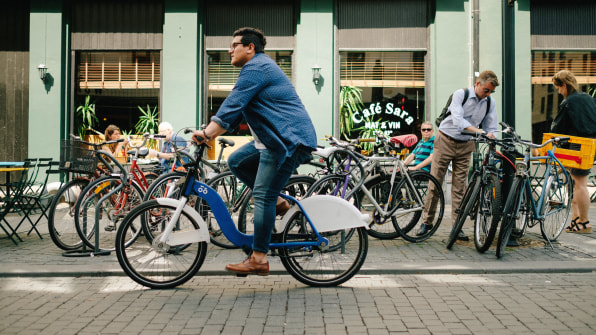
OSLO
Over the last few years, the city of Oslo removed hundreds of parking places on the streets in its city center. At the same time, it built up its network of bike lanes and bike share system and worked to improve public transit—all steps to encourage people to drive less without explicitly banning cars. “I am certain that when people imagine their ideal city, it would not be a dream of polluted air, cars jammed in endless traffic, or streets filled up with parked cars,” Hanne Marcussen, the city’s vice mayor of urban development, told Fast Company in an interview in 2019.
In annual surveys, the city has found that more pedestrians are using the city center; by 2019, when the final parking spaces were removed, 43% more people were hanging out in downtown areas than in 2017. While retail stores are struggling throughout Norway because of online shopping, there’s some evidence that stores in the walkable city center are doing better. (Studies in other areas have shown that when parking is replaced with bike lanes, local businesses get more customers.)
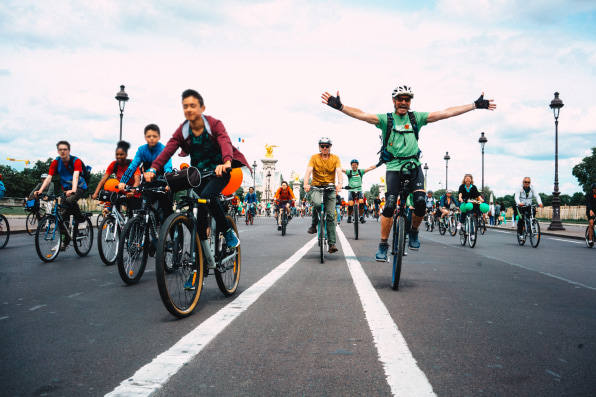
PARIS
On the first Sunday of each month, the heart of Paris—the 1st, 2nd, 3rd, and 4th arrondissements—shuts down to most traffic, turning streets over from cars to pedestrians and cyclists. (A few vehicles, including cars owned by local residents and delivery vehicles, are allowed to enter at access points and drive slowly.) It’s a situation that Mayor Anne Hidalgo wants to make permanent. Hidalgo, who is currently campaigning for reelection, is pledging to pedestrianize the city center as part of a broader plan to continue the work that’s already started to move Paris away from cars. The plan involves expanding the city’s network of bike paths and converting parking spaces into parks, gardens, and playgrounds. Hidalgo is also championing the idea of the “quarter-hour city”—making it possible for every Parisian to easily walk or bike to work and daily errands in 15 minutes.

TEMPE, ARIZONA
If you want to live in a new development called Culdesac—built by a company that calls itself the world’s first post-car real estate developer—you’ll have to agree not to own a car. The new neighborhood, which is scheduled to open this fall, includes some basic amenities onsite, such as a grocery store, restaurants, and a gym. It’s also near a light rail station that takes commuters to downtown Tempe. The development doesn’t block off cars completely, and visitors have a place to park. But allowing for fewer cars means that neighborhood now has more room for green space, bike lanes, and even a dog park.
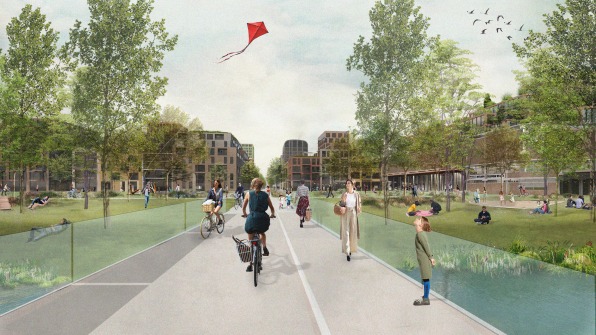
UTRECHT, NETHERLANDS
A new neighborhood in the Dutch city of Utrecht will be home to 12,000 residents, but none will own cars. The area, stretching over 59 acres next to a river, includes stores, parks, and other amenities within a short walk; it’s also close to the city’s central train station. If someone needs to go farther, they can borrow one of the neighborhood’s shared cars. For Utrecht, it’s the continuation of a long move away from cars: The city first began experimenting with car-free streets in its city center in 1965.
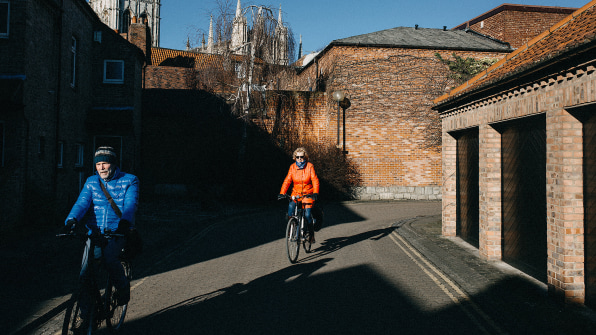
YORK, U.K.
A small city of 150,000, roughly the population of Kansas City, York has a long history that predates the car. “The central historic core has broadly the same street plan as it did when the Vikings were here and the area is contained by a medieval city wall,” Johnny Crawshaw, a city councilor in York, told Fast Company in a recent interview. It’s not an area that’s well-suited for driving—and as the city makes plans to become carbon neutral by the end of the decade, traffic is also a key part of its pollution problem. By 2023, the city plans to ban most vehicles from its medieval city center, adding bike lanes and an on-demand shuttle service to help people transition from driving.
View original article at www.fastcompany.com

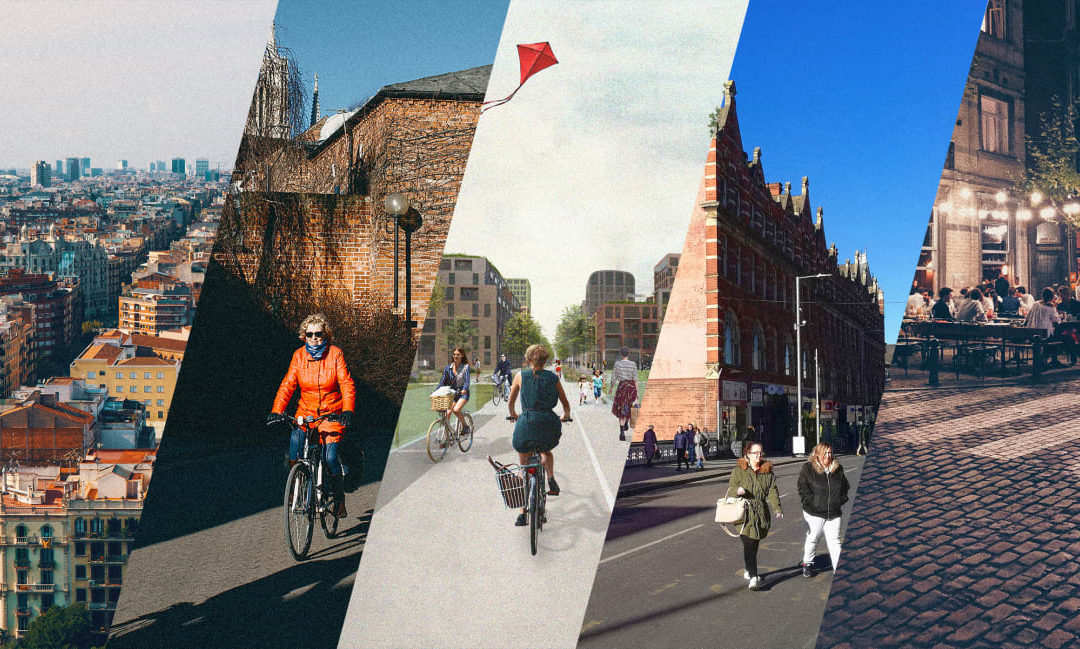


Recent Comments